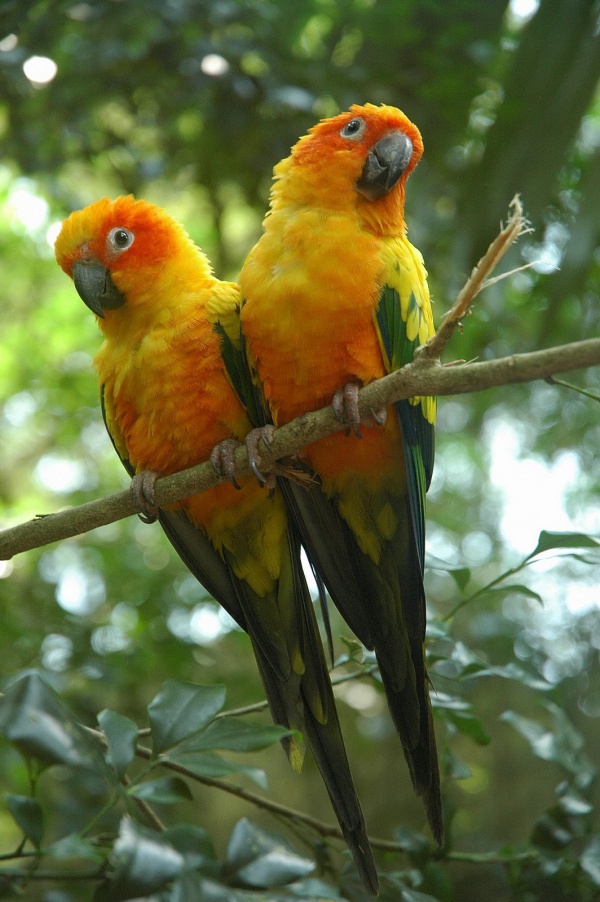Facts About Sun parakeet
The sun parakeet, also known as the sun conure, is a strikingly colorful parrot native to the northeastern regions of South America. These social birds live in flocks and form lifelong monogamous pairs. Their diet in the wild comprises a variety of fruits, flowers, berries, seeds, nuts, and insects. When kept as pets, they can live for up to 30 years.
First described by Carl Linnaeus, the sun parakeet belongs to the genus Aratinga. While it is a monotypic species, it is part of a larger group known as the Aratinga solstitialis complex, which includes three other species. Unfortunately, the sun parakeet is now considered endangered due to habitat destruction and trapping for the pet trade.
These vibrant birds are primarily found in northeastern South America, including Brazil, Guyana, Suriname, and French Guiana. They thrive in tropical forests, savannas, and coastal regions.
Sun conures are known for their social behavior, communicating through vocalizations and enjoying travel in flocks. They engage in various activities such as preening, feeding, and bathing. In captivity, they require plenty of mental stimulation and social interaction to stay content and healthy.
Their diet in the wild is quite diverse, consisting of fruits, flowers, seeds, nuts, and insects. As pets, their diet should include a mix of fruits, vegetables, seeds, and nutritional supplements to ensure balanced nutrition.
Reproductively, sun conures are devoted partners, with females handling incubation and males protecting the nest. Typically, they lay three to four eggs per clutch and care for their young until they are ready to be independent.
The species faces threats from habitat loss and illegal trapping, but laws banning the importation of wild-caught birds have helped boost captive breeding programs. Sun conures are popular pets due to their vibrant plumage and playful nature. However, they require a lot of attention, mental stimulation, and proper care to thrive in a home environment.

 Bolivia
Bolivia